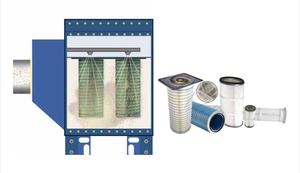July 9, 2018
One of the most critical parts of a food facility is sanitation. While the products coming from the facility may be high-quality, worthwhile investments, if the facility is not doing everything it can to ensure the best sanitary practices, consumers will be reluctant to actually try or trust them.
Fortunately, improving and ensuring sanitary practices within food facilities is not a difficult task. Here are some of the best sanitary practices to put into place at any food facility to ensure that it is up to code and following requirements.
1. Proper Hygiene
From hand washing to covering up employees’ hair and clothes, there is a lot that goes into proper hygiene in a food facility. Make hygiene a priority by providing employees with the right tools and training to ensure hygiene levels remain high. This includes providing them with enough hand washing stations and soap, hair nets, gloves, masks, and coats to minimize contamination as much as possible. Additionally, have strict hygiene protocols in place and ensure they are being followed properly. Using the CDC method for hand washing, as well as keeping sick employees away from food products are some of the top ways to ensure proper hygiene.
2. Pest Control
Where there is food there is always a potential for a pest problem, which is something food facilities must work hard to avoid. Cockroaches, flies, and rodents can all spread dangerous diseases and even damage the building’s structure or machinery. In order to avoid pest issues, food facility managers need to stay on top of these things and perform regular pest maintenance. Having pest services come to inspect the facility, performing the required pest maintenance procedures, and fixing any problems as soon as they arise are just a few of the ways to keep pest out of a food facility.
3. Maintenance
When the food processing machinery is not working properly, then a food facility will be unable to complete its work. Therefore, it is critical the facility managers perform regular maintenance on any and all machinery used in the facility. This includes ensuring that all equipment that come into full contact with the food products are properly sanitized at the end of every day. Otherwise, unsanitary equipment can lead to the spread of diseases and food-borne illnesses, which can quickly begin to spread. Maintenance includes replacing broken parts as quickly as possible, and not using machinery until it is in full working order.
4. Sanitary Drainage
Drainage systems tend to not get a lot of mention when it comes to sanitary practices. However, they are one of the most important areas food facilities need to address to ensure the best sanitation practices. A sanitary drainage system helps to keep facilities clean by redirecting any wastewater from facility floors and into a drainage channel. A high-quality sanitary drainage uses food-grade quality stainless steel in a pre-sloped, grate-less design, which minimizes the concern of things such as contamination and bacteria growth.
5. Training
Another, easy way to ensure the best sanitary practices is to make sure all employees have proper training. This training should cover everything from proper hand-washing techniques to how to safely handle and store food products within the facility. Training is essential because, without it, accidents are more likely to happen and there is the potential for serious safety and health issues. New employees should be required to go through a certain number of hours of training to ensure that they are familiar with everything, and existing employees should have to repeat training at least once a year, in case things have been forgotten or have changed. Training should also cover how to safely use any machinery involved in the food processing to prevent injuries or machine breakage.
Sanitary food practices are critical for all food facilities, especially if they want to be successful. Even the smallest factors can affect the level of sanitation within a facility. These are some of the top sanitation practices to have in place and work on to ensure a food production facility is up to code and meeting the required standards. From pest control to a sanitary drainage system, there is plenty that can be done with the right level of commitment.
Matt Lee is editor, Innovative Building Materials, Austin, TX. For more information, call 512-508-4667 or visit www.innovativebuildingmaterials.com
For more articles, equipment reviews, and breaking news, visit our Equipment Zones
You May Also Like


